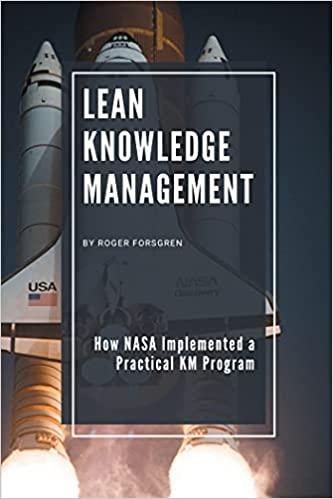Question
Need a decision tree! Julie owns a winery in a Caribbean Island. In a typical year, Julies winery yields 120,000 bottles in a single harvest,
Need a decision tree!
Julie owns a winery in a Caribbean Island. In a typical year, Julies winery yields 120,000 bottles in a single harvest, with plenty of bottling capacity to spare. This year was expected to be another typical year until a storm was spotted heading towards the island.
The Weather Channel thinks there is a 50-50 chance that the storm will hit the island. Julie is trying to decide whether to harvest early and not risk the storm.
If she harvests immediately, the grapes will not have as complex a taste (they have not yet fully matured), and she would only be able to sell the bottles at $5.70 each.
If the storm directly hits the island, it will drop one of two kinds of rain depending on the formation of the storm: a cold, heavy rain or a warm, light rain. A cold, heavy rain would increase the yield by 10%. At the same time, though, it would result in some dilution in the taste of the grapes. Julie thinks she can sell all of the diluted wine for around $4 per bottle approximately 70% of the early harvest price. An additional consideration is the small risk of hurting the brand Julie faces by selling a diluted wine. As such, she may choose to instead sell the grapes directly (instead of making wine), generating about only half of the revenue of the thinned-out wine, but protecting the brand.
A light, warm rain (which Julie gives a 40 percent chance of occurring if the storm hits), on the other hand, will actually help the wine through the creation of a beneficial mold, giving the wine a more complex taste, leading to a more desirable wine. Based on experience, Julie knows that, when the mold develops, she could probably sell the wine for about $16 per bottle instead. Unfortunately, the mold also leads to some wastage in the grapes, decreasing the yield by 30 percent.
Finally, if the storm misses the island entirely, Julie will most likely wait for the grapes to ripen. Then, there is a 20 percent chance that she will end up with a low acidity wine that she can sell for $5 each, and a 40 percent chance that she will end up with an average wine that will bring about $6 each. There is also the chance that she will end up with a good wine which will bring about $7 each.
All prices are wholesale. You can assume that the bottling and labeling costs will not play a significant role in choosing between the possible options.
Assignment Questions:
1. What should Julies decision be about early harvesting, given the information above? Build a decision tree to show her options.
2. How much should Julie be willing to pay, to learn in advance, whether the storm will hit the island, to decide whether to harvest early? Assume that the information would be perfect, i.e., it will tell her with 100% certainty whether the storm will hit or miss the island.
3. How much should Julie be willing to pay, to learn in advance, about whether the conditions of the storm are conducive to the formation of the mold? Again, assume the information would be perfect. She will not know in advance if the storm will hit or miss the island, but she will know whether the storm brings with it a light, warm rain or a heavy, cold rain.
Step by Step Solution
There are 3 Steps involved in it
Step: 1

Get Instant Access to Expert-Tailored Solutions
See step-by-step solutions with expert insights and AI powered tools for academic success
Step: 2

Step: 3

Ace Your Homework with AI
Get the answers you need in no time with our AI-driven, step-by-step assistance
Get Started


